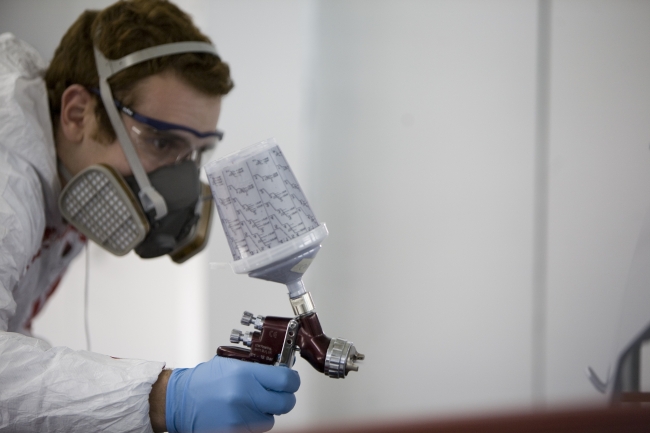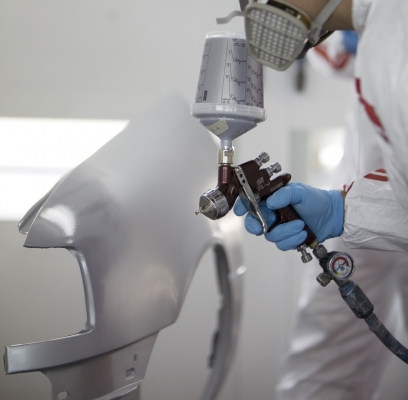4 minute read • published in partnership with Atlas Copco
Insight: How to avoid contaminated breathing air in the workplace
Andy Lill from Atlas Copco highlights the hazards of contaminated workplace breathing air, the role of compressed air purification as a safe alternative, and the need for employers’ compliance with a wide range of standards and regulations.
In some work areas, particularly in industrial sectors such as oil and gas, chemical, pharmaceutical and manufacturing, the ambient atmospheric air is too contaminated for operatives to breathe without risk to health. In these cases, it is common practice, and an essential duty of care, for employers to provide a safe compressed air system as an alternative source of breathing air.
But the emphasis must be on ‘safe’ and it is important that the risks are understood. Standard compressed air is probably insufficient to ensure consistent breathing air quality and it is vital for all to realise that untreated compressed air is not clean. The compression of ambient air concentrates the normal contaminants already present in the air and can also introduce other constituents such as oil vapours, condensed water and bacteria that can have an immediate effect on operators’ well-being and long-term health.

To assist employers in this complex area of Health & Safety, it is recommended that manufacturers seek the assistance of compressed air system suppliers with specific breathing air capabilities / Picture: Atlas Copco
Breathing Air purifiers
The solution to the problem is the addition of breathing air purification equipment to the compressed air supply, controlled and monitored in accordance with compressed air for breathing quality standards such as EN 12021:2014 ‘Respiratory equipment -. Compressed gases for breathing apparatus”.
In selecting the appropriate purification equipment, it must be remembered that contaminates will be in one of three states of matter: solid, liquid or gaseous. The corresponding contaminant limits within EN 12021:2014 requirements are as follows:
• Odour: The gas shall be free from unsatisfactory odour and taste
• Oxygen: Content shall be 21% +/- 1%
• Carbon Dioxide: Content shall be less than 500 ppm
• Carbon Monoxide: Content shall be less than 5 ppm
• Oil: Content shall be less than 0.5 mg/m3
• Water (for airlines less than 40 BarG): Where the apparatus is used and stored at a known temperature the compressed breathing air shall have a dew point sufficiently low to prevent condensation and freezing and be at least 5°C below the likely lowest temperature. Where the conditions of usage and storage of any compressed air supply is not known, the pressure dewpoint shall not exceed -11°C
In order to limit health risk and to comply fully with regulatory requirements, it is essential that assured purity levels are achieved by the purification unit within the compressed air network. The ideal breathing air purifier should have the capacity to take air from any type of compressor and convert it into ultra-clean breathing quality air. It needs to combine the functions of water separation, contaminant filtration and desiccant drying of the air output.
One such unit, Atlas Copco’s BAP (breathing air purifier) range, features seven vital functions: a water separator that removes any liquid water, a bulk aerosol filter to eliminate oil and water content, a fine coalescing filter to remove even smaller particles of oil and water from the supply, plus a desiccant dryer to take out any remaining water and CO2. An activated carbon filter is included to remove gaseous impurities and a catalyst takes care of CO oxidation. Finally, a bacteria filter eliminates micro-organisms and fine particles.
This level of capability ensures the breathing air purifier complies with a wide range of standards and regulations, such as OSHA Grade D, NFPA-99, CSA Z180.1-00, CGA G7.1-1997, EN 12021, BS 4275, ISO 14971, OHSAS 18001, European Pharmacopeia and other International Breathing Standards. Such compliance guarantees a safe working environment in a wide range of applications, ranging from shot-blasting, tank cleaning, tunnelling, pharmaceutical manufacturing, spray painting, offshore/marine processes, asbestos removal, to high-pressure cylinder filling and many others.
The importance of testing
Within a purified compressed air supply network, it is essential to carry out air quality tests to ensure that the control measures put in place are delivering the air quality required. In the UK, EN12021 advises that samples should be taken and analysed at least every three months or more frequently if there has been a change in, or any concerns relating to, the production process.
In the HSE guideline document Respiratory Equipment at Work (HSG53) it states the frequency of such tests should be based on a risk assessment, should take place at least every three months and more often when the quality of air cannot be assured to these levels.

In some industrial sectors, the ambient atmospheric air is too contaminated for operatives to breathe without risk to health / Picture: Atlas Copco
For mobile breathing-air compressors in the UK, COSHH stipulates that the employer should ensure that, wherever a compressor is located, the quality of air it supplies is not compromised by nearby contaminants. It strongly recommends that for mobile compressors the air quality is tested whenever the unit is first moved into a new position or if prevailing wind conditions change.
The final decision on frequency of tests is the responsibility of the employer and needs to not only reflect local legislation but also the task and frequency of use. It should be incorporated into risk assessments and updated regularly to reflect results from ongoing breathing air tests in order to maintain a robust control system.
It goes without saying that only competent personnel should be involved in designing breathing air systems and preparing risk assessments. To assist employers in this complex area of Health & Safety, it is recommended that managements seek the assistance of compressed air system suppliers with specific breathing air capabilities and product ranges, such as Atlas Copco, who will have competent persons trained in providing and maintaining breathing air systems.
